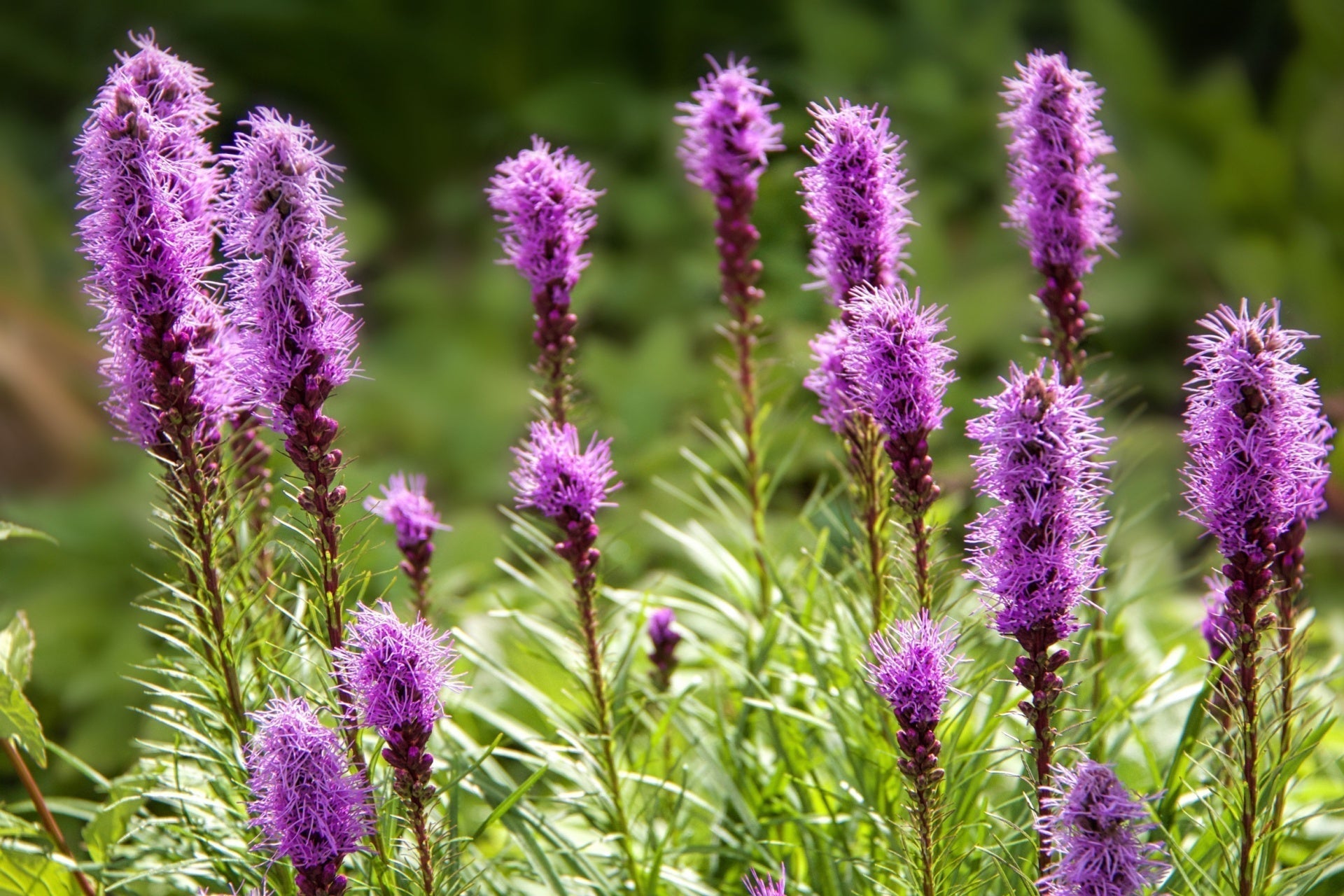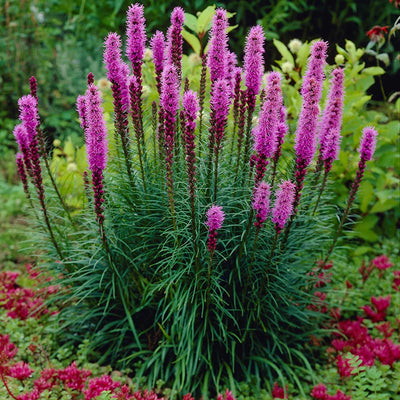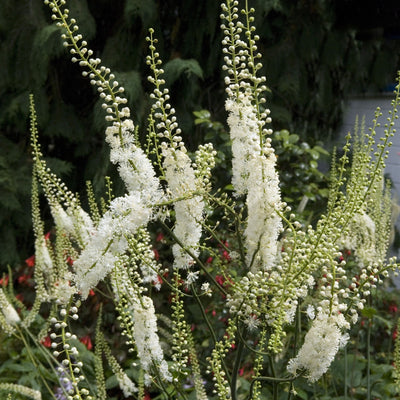The Blazing Star Plant is a show-stopper in the summer. It adds vertical beauty and bright colour to any yard. This perennial wildflower is called Liatris spicata in the scientific world. Its tall, feathery purple blooms draw bees, butterflies, and hummingbirds. It comes from North America and does well in sunny garden beds, prairies, and fields. The Blazing Star's thin spikes and grass-like leaves give the landscape structure and depth. This makes it a great choice for pollinator-friendly and native plant gardens.
This Blazing Star flower is a perennial that doesn't need much care and blooms all summer, adding colour and life to your yard. This plant is always a hit, whether you're making a butterfly garden or just adding a touch of wild beauty to your yard.
The Blazing Star Plant is Easy to Grow
If you want a hardy annual that doesn't need much care, the Blazing Star Plant is it. This species can live in a wide range of soil types and temperatures, so it can be used in a lot of different yard settings. It's easy and fun to learn how to grow Blazing Star, no matter how much planting experience you have.
How to Plant:
- Pick a spot with lots of sun and dirt that drains well.
- Give plants or bulbs about 12 to 15 inches of space between them for the best growth.
- Water often until it's established, then only when it's really dry.
The Blazing Star annual will bloom for years after it is planted, giving the garden colour and pollinators something to do all summer long.
The Black Cohosh Plant is a natural plant that would make a good companion. The white flower spikes look beautiful next to the purple Blazing Star flowers. Both plants attract good pollinators and do well in soil that is similar to the Blazing Star's.
The Flower and Scent of the Blazing Star Perennial
The Blazing Star flower is tall and beautiful, with small, fluffy blooms covering its straight stems. Blazing Star blooms from the top down, which is different from most flowers that bloom from the bottom up. This makes for a striking vertical effect in your yard.
Butterfly and bees are drawn to the flowers by their light, sweet smell. Many people like it in wildflower fields and pollinator gardens because it blooms for weeks on end, giving summer displays more height and texture.
Different types of Blazing Star perennial liatris come in different shades of purple and pink. It looks great with bright red flowers like the Cardinal Flower to make a beautiful colour contrast that makes any garden area look better.
How to Care for Your Blazing Star Plant
Proper Blazing Star Plant care ensures they will keep growing and coming back every season. Once they're established, they don't need much care, but they do need some attention when they're first starting to grow.
Blazing Star Plant care key points:
- Water: During the first growing season, keep the dirt just slightly wet. After that, only water when it's really dry.
- For fertiliser: Add a thin layer of compost to the soil in the spring to make it healthier.
- Pruning: After the first cold, cut the leaves back to the ground.
If you live in a windy area, you might want to stake bigger plants to keep them from bending. The plant is very resistant to drought because its roots form dense tuber clumps that store water.
Why Add the Blazing Star to Your Garden?
Not only is the Blazing Star Plant pretty but it is also very good for adding variety and structure to your yard. Here is why you should put it in your yard:
- Pollinator Magnet: Attracts butterflies, bees, and hummingbirds with its nectar-rich flowers.
- Long Blooming Season: It blooms from the middle of summer until the end of summer, filling in gaps in the yard when many other plants die back.
- Low Maintenance: Once it's established, it doesn't need much care or water.
- Attractiveness to the landscape: adds striking vertical lines that look great with flowers that grow low.
The annual Blazing Star also makes beautiful flowers that can be cut and used. The spikes stay nice and round in bouquets, and the flowers stay colourful even after being dried, which makes them perfect for making arrangements for looks.
For gardens that look like prairies or naturalised plants, the Blazing Star looks great with native grasses and perennials. It also does well in mixed borders and country gardens, where its bright flowers stand out against the greenery.
Blazing Star Varieties Companion Plants
The most common type is Liatris spicata, but there are other kinds that are different in height and colour, such as Liatris pycnostachya and Liatris aspera. All of them have fluffy flowers and are easy to grow.
You can find healthy Blazing Star plants at TN Nursery, along with many other plants that will look great in your yard. Black Cohosh Plant for a change of texture and to attract pollinators. Cardinal Flower for a splash of red that goes well with Blazing Star's purple tones.
The two plants are native Blazing Star perennial that need similar amounts of soil and sunlight, so they will grow well together in a garden scheme.
FAQs
What is the Blazing Star Plant?
Born and raised in North America, the Blazing Star Plant (Liatris spicata) is famous for its tall, fluffy purple flowers that are good for pollinators.
Where to buy Blazing Star Plant?
The TN Nursery sells healthy Blazing Star plants that were grown in a nursery. The nursery focusses on native grasses and wildflowers.
When to plant Blazing Star bulbs?
The best time to plant Blazing Star bulbs is in the early spring or autumn because they need time to grow roots before they can flower in the summer.
How to plant Blazing Star seeds?
Plant seeds in dirt that drains well and keep them slightly damp until they sprout for strong and straight growth it is better to give it full sun.
Does the Blazing Star flower attract butterflies?
Yes, monarchs and swallowtails and many other natural pollinators love the Blazing Star flower.




